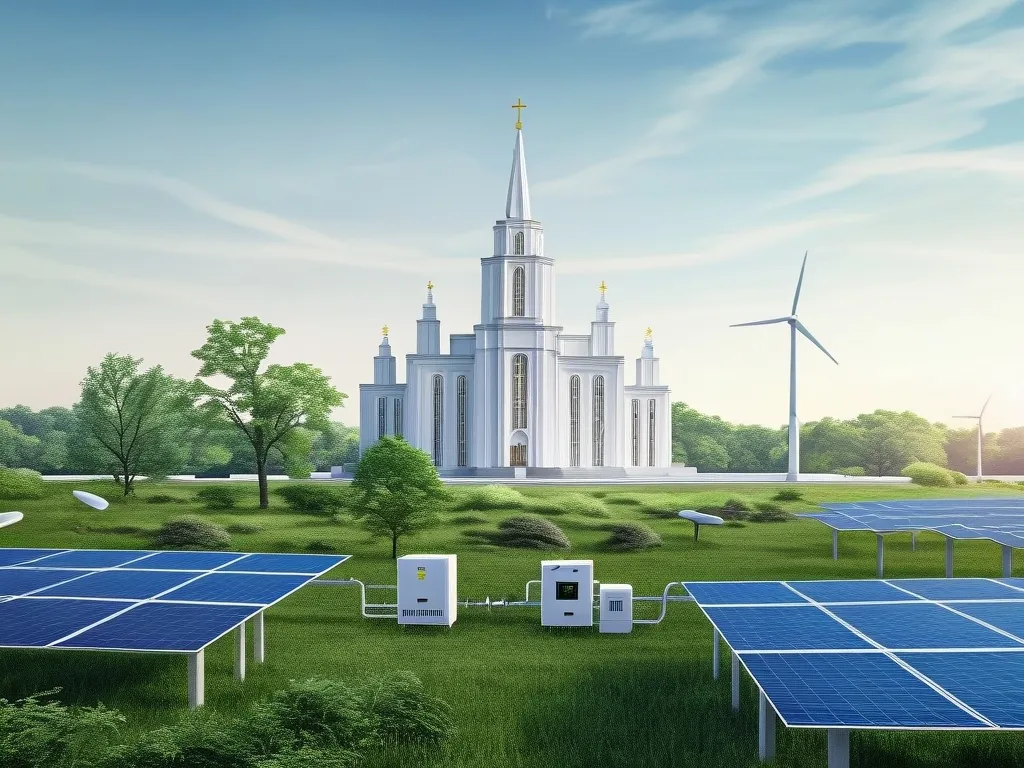As we navigate the complex web of global issues, it’s easy to overlook the environmental impact of our most sacred spaces and traditions. Religious architecture and practices, often seen as pillars of spiritual life, leave behind an unforeseen environmental footprint that warrants closer examination.
The Construction of Sacred Spaces
Grand temples, churches, and mosques are not just symbols of faith but also monumental structures that require significant resources and labor to construct. The materials used in these buildings, such as marble, stone, and wood, often come from distant locations, contributing to carbon emissions from transportation. For instance, the construction of the Vatican’s St. Peter’s Basilica involved the use of massive amounts of marble and stone, much of which was quarried from remote areas and transported over long distances.
In modern times, the environmental cost of building such structures is more apparent. The energy consumption and waste generation during the construction phase are substantial. For example, the building of large mosques in the Middle East, with their intricate designs and massive domes, requires enormous amounts of energy and resources. These structures, while beautiful and spiritually significant, add to the overall environmental burden.
Resource Consumption and Energy Use
Once constructed, these religious buildings continue to have a significant environmental impact through their daily operations. Energy consumption is a major concern, as these buildings often require extensive lighting, heating, and cooling systems. Churches, for example, may use large amounts of energy to maintain comfortable temperatures for their congregations, especially during peak worship times. Similarly, mosques and temples require lighting for evening prayers and ceremonies, which can lead to high electricity bills and increased carbon footprints.
Water Usage and Waste Management
Water usage is another critical aspect to consider. Many religious buildings have elaborate systems for cleaning and maintaining their premises, which can result in substantial water consumption. Additionally, the management of waste generated from daily activities, such as food waste from community meals or paper waste from religious texts, is often overlooked. Proper waste management practices are essential to minimize the environmental impact, but they are not always implemented effectively.
Religious Festivals and Ceremonies
Religious festivals and ceremonies, while joyous and spiritually enriching, also have a profound impact on the environment. The Hindu festival of Diwali, for instance, is celebrated with millions of candles and fireworks, contributing significantly to air pollution. Similarly, the Catholic tradition of lighting candles during Easter services can lead to increased air pollution and waste from the candles themselves.
Pilgrimages, another integral part of many religious traditions, can have devastating effects on local ecosystems. The Hajj pilgrimage to Mecca, for example, attracts millions of pilgrims each year, leading to increased energy consumption, water usage, and waste generation. The pressure on local infrastructure and natural resources is immense, and the environmental consequences can be long-lasting.
Impact on Local Ecosystems
The construction and maintenance of religious sites often disrupt local ecosystems. The building of large religious complexes can lead to deforestation, habitat destruction, and the displacement of wildlife. For instance, the construction of the Golden Temple in Amritsar, India, involved significant land clearing and water diversion, affecting the local flora and fauna.
Community Engagement and Sustainability
Despite these challenges, many religious communities are now actively working towards sustainability. Churches are hosting educational forums and workshops on environmental stewardship, encouraging their members to adopt sustainable practices. Some congregations are auditing their energy use and implementing sustainable solutions such as LED lighting and efficient HVAC systems.
Faith-based initiatives like the Interfaith Rainforest Initiative are protecting tropical forests from deforestation and degradation. This global partnership involves religious leaders, indigenous peoples, scientists, and conservationists working together to preserve these critical ecosystems.
Sharing Spaces for Sustainability
One often-overlooked aspect of sustainability in religious architecture is the efficient use of space. Many church buildings are underutilized, being used only a few days a week. This underutilization is not only financially inefficient but also environmentally unsustainable. By sharing these spaces with the community, churches can reduce their environmental footprint. For example, a church might host community events, educational programs, or even serve as a shelter during natural disasters, thereby maximizing the use of its space and resources.
Moral Imperative and Community Action
For many faith leaders, environmental sustainability is not just a practical necessity but a moral imperative. Scriptural teachings across various religions emphasize the importance of caring for God’s creation. In Christianity, for instance, Psalm 24:1 reminds us that “the earth is the LORD’s and all that is in it,” underscoring our role as caretakers of the Earth.
By advocating for environmental justice, faith communities can make a significant impact. They can lobby for policies that reduce greenhouse gas emissions, promote renewable energy sources, and support adaptation and resilience measures. Divesting from fossil-fuel companies and investing in green alternatives is another way faith communities can align their financial practices with their environmental values.
Personal Reflections and Collective Action
As I reflect on the environmental impact of religious architecture and practices, I am reminded of the power of collective action. Small changes, such as using energy-efficient lighting or reducing water consumption, can add up when implemented across thousands of religious sites worldwide.
Moreover, the moral authority of faith communities can inspire broader societal change. By reframing climate change as a moral crisis rather than just an environmental issue, faith leaders can mobilize their followers to take action. This is evident in initiatives like the Green Pilgrimage Network, which aims to make pilgrimages more environmentally friendly by promoting green transport, accommodation, and waste management.
A Path Forward
As we move forward, it is crucial to balance our spiritual practices with modern ecological consciousness. This involves a multifaceted approach: from the construction and operation of religious buildings to the celebration of festivals and pilgrimages.
By integrating environmental education into religious teachings, we can inspire a new generation of stewards for the Earth. Collaborations between faith groups, scientists, and local communities can amplify calls for climate justice and model sustainable lifestyles.
In the end, the intersection of spirituality, architecture, and sustainability is not a conflict but an opportunity. By honoring our sacred responsibility to care for the Earth, we can ensure that our age-old traditions harmonize with the needs of our planet, creating a more sustainable and just future for all.






